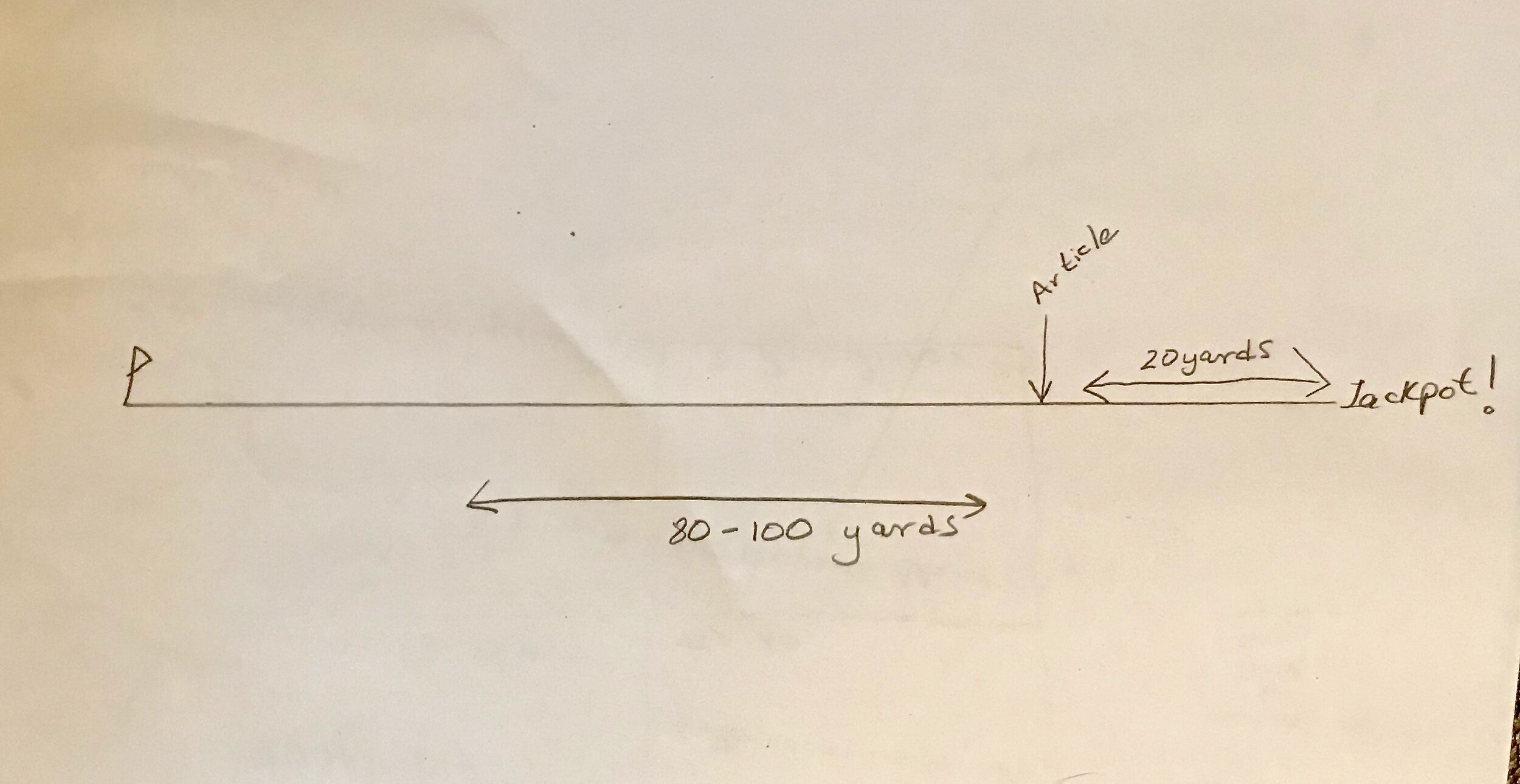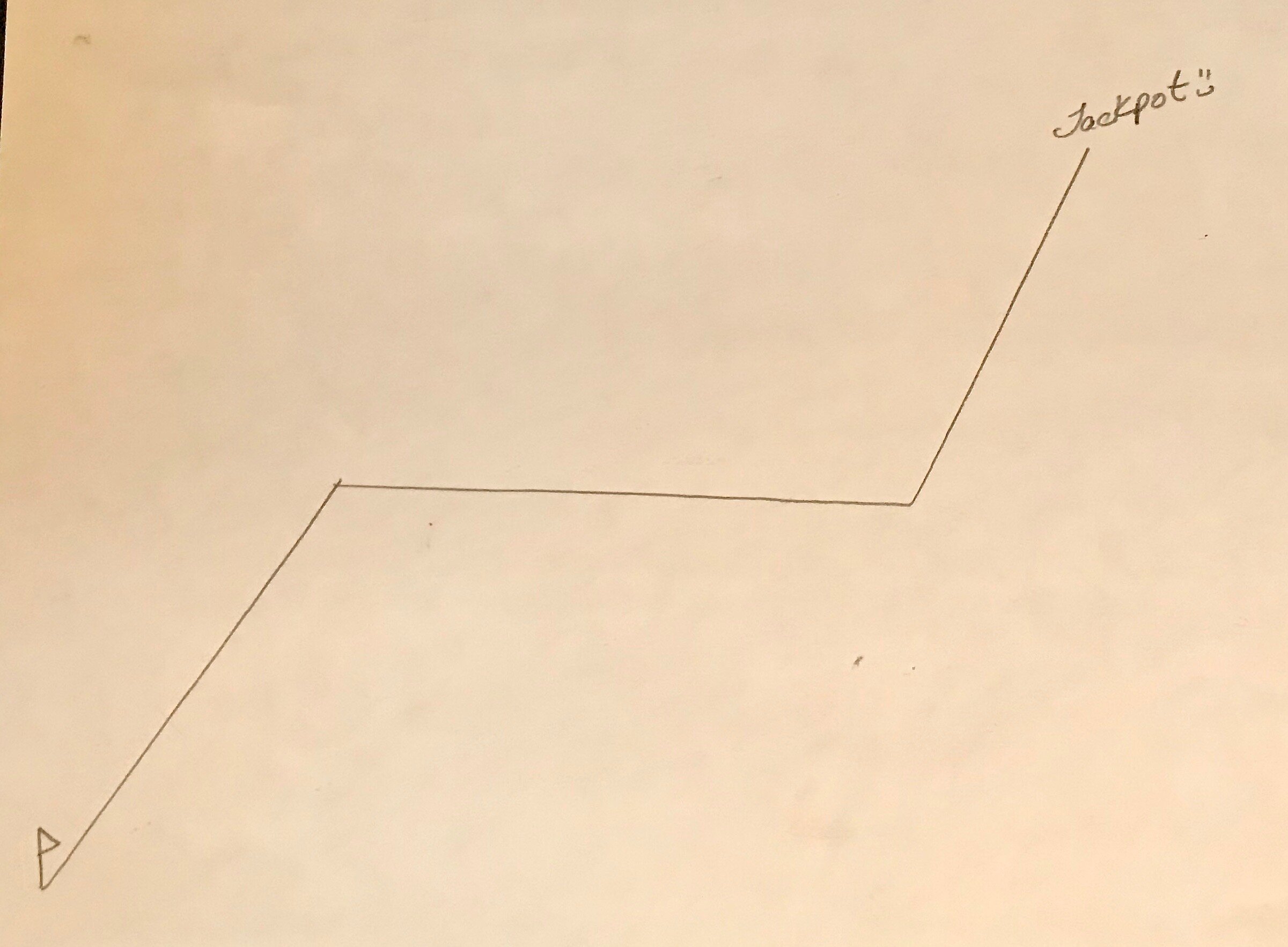Yesterday I posed these two questions about matches and run thru’s to The Edge group:
What are your goals when doing matches and/or more formal run thru's?
How do they support your training?
I appreciate the diversity of responses received; sharing our thoughts gets them out of our head, and invites others to help us refine and shape them.
Some of you may remember last Specialty when I was trying to decide whether to show Claire in Novice B obedience — this was happening literally at ringside. She was entered but not ready to show, in my opinion. I was teaching her a “finish” as we waited through the long class, for heaven’s sake.
I know how to have fun with my dog in a ring and do not suffer from Ring Nerves. Therefore, I decided — what the heck?! I would have fun and make it a great experience for her. Basically, I decided to treat it like a match or a run thru.
My version having fun with an unprepared dog was this: Claire was second in a class of something like 50 dogs, behind her Uncle Tristan who went High in Trial. She lost two points for her no-sit finish and still scored a 196.
And most important— we had a blast.
Had I seen one iota of stress in my dog, I would have excused us immediately — rehearsing undesired attitude in any kind of a ring is a Bad Idea.
If a dog is stressed in a match, she has practiced being stressed.
If a dog is worried in a run thru, he has rehearsed being worried.
Attitude is the foundation of focus — if you lose the confident attitude of a dog, you can kiss focus good-bye.
Therefore, attitude — not stress or worry or even actual skills — is what most needs to be practiced in matches and run thru’s.
“Working through” the concerns or worries is actually not what we want — it still brings the worries and concerns into the ring, and risks teaching the dog Learned Helplessness, which is a real buzzkill.
Most people can teach the dog skills — that is the easy part. The hard part, evidenced by the number of dogs being shown that look like they would rather be anywhere but a ring, is teaching and maintaining attitude.
Don’t risk poisoning the well. Once poisoned, it is tough to get right again (but it is possible!).
We all have different goals for our dogs. I would hope, however, that we share a commitment to ensuring our dogs have what they need to be happy and successful in whatever we ask of them.
And that, my Friends, means training skills and attitude to fluency before stepping in a ring setting — and then only doing what the dog can and will do in that ring while maintaining attitude.
For some dogs, that could mean a match in which we do two steps of heeling and then a toy is tossed before we happily leave the ring.
For Claire last year — it was the entire Novice ring exercises.
I have not shown Claire in obedience since the 2019 Specialty. When she enters the obedience ring again this Spring, my primary objective will not be about scores or ribbons or even what anyone else thinks about our performance. Rather, I will consider the runs successful if my dog maintains her pizzazz and attitude because that is, after all, the most challenging of training skills.
Game On.







